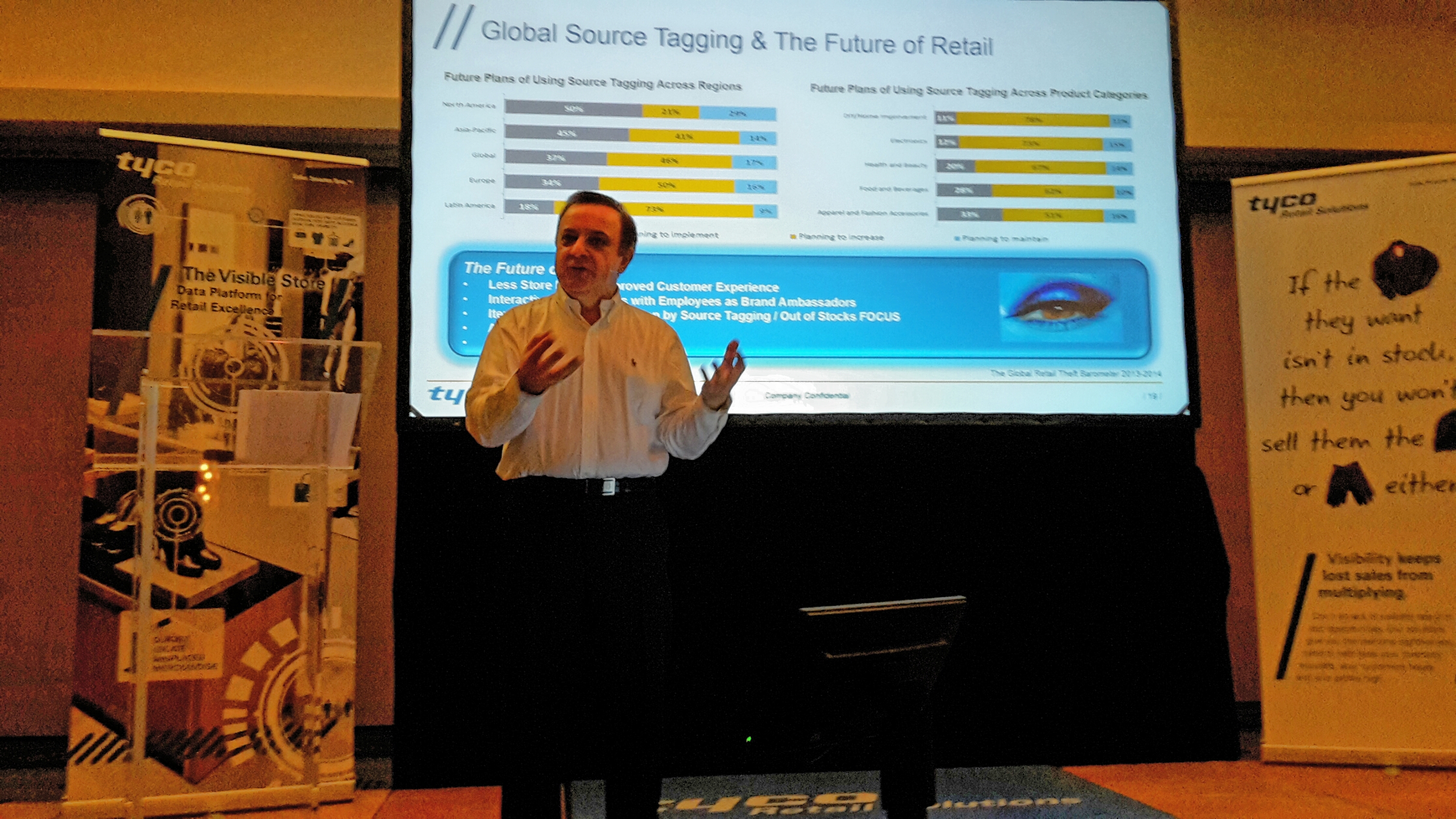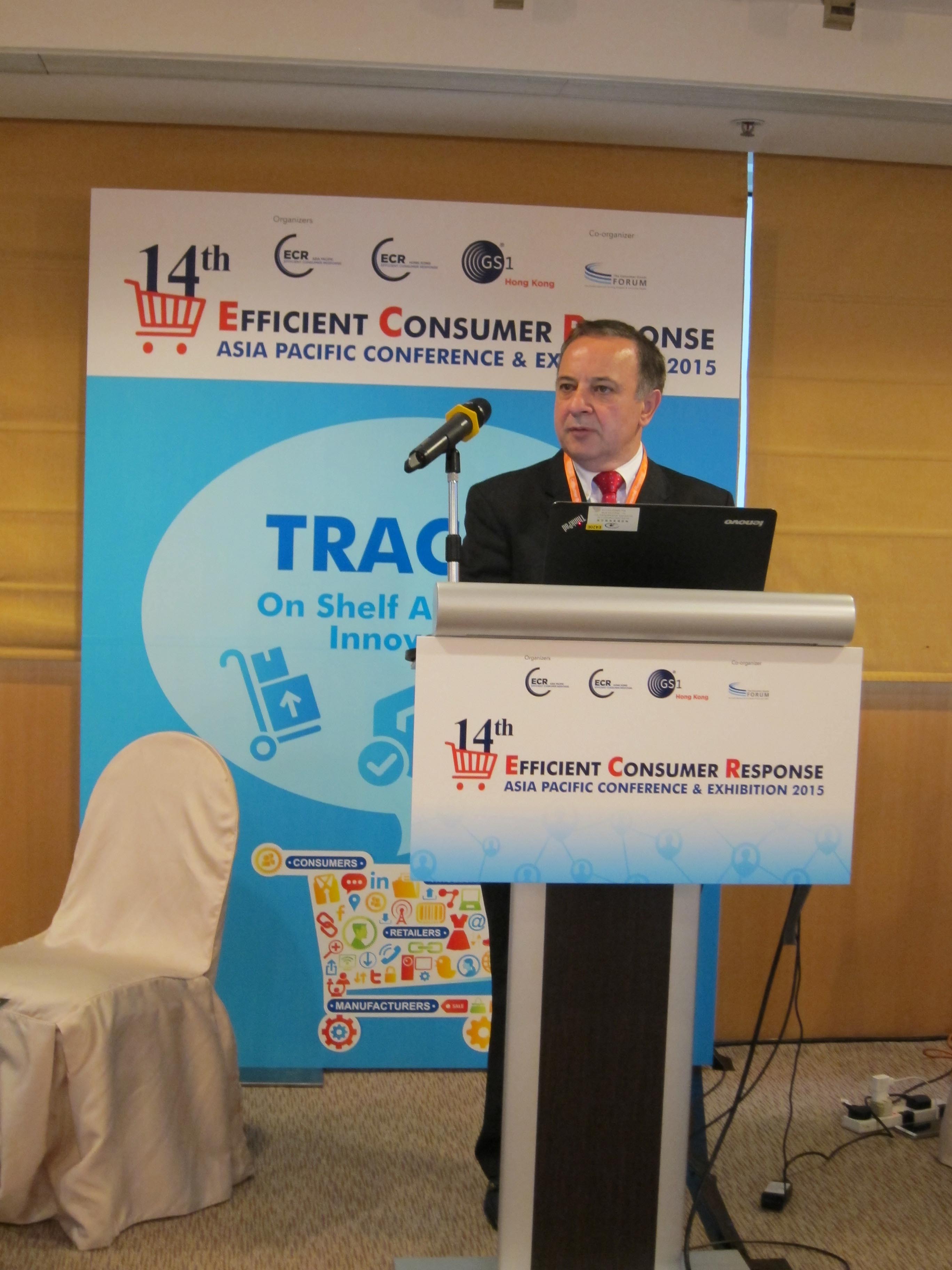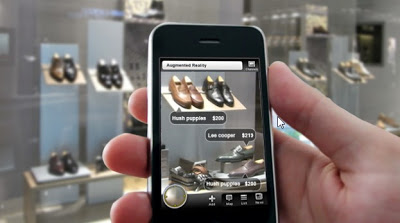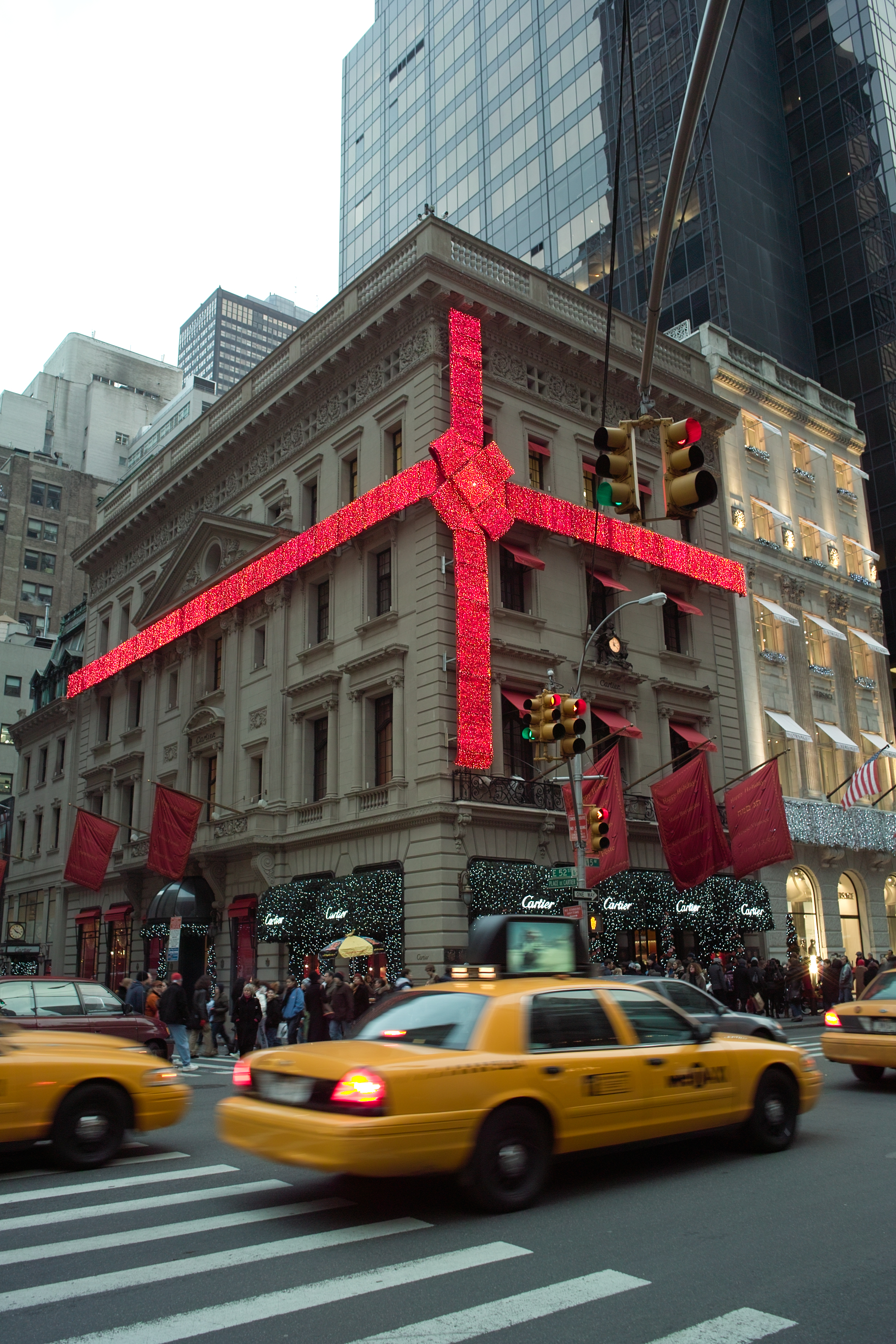Blog

In Rome earlier this month had the pleasure to speak once again to 100+ business leaders from Central, Eastern Europe, Scandinavia, Russia, the Middle East and Africa. Building on the positive response to a similar presentation last year in Budapest, this year's focus was on the latest global retail industry data and hints again at its impact on the future of retail.
Summarizing the key content:
Global Retail Market Highlights (*)
- Details
"The future will be won by retailers who are bold enough to innovate and adapt and creatively leverage the amazing potential that technology and calculated risk taking will unleash in 2015." - Jeff Roster, Gartner
 The 25th Annual Retail Technology Study, which is one of my favorite industry documents, was recently published by RIS News. This year's report was appropriately titled "Retail Transformed: An Inspired Vision to Innovate Differentiate, and Accelerate."
The 25th Annual Retail Technology Study, which is one of my favorite industry documents, was recently published by RIS News. This year's report was appropriately titled "Retail Transformed: An Inspired Vision to Innovate Differentiate, and Accelerate."
As Joe Skorupa, RIS News Group Editor in Chief, points out, "retailers are going through a transformative phase, the scope of which has not been seen since the first “Retail Technology Study” in 1991. It is pioneering new methods of customer engagement that will explode in the future and building out true cross-channel experiences. These developments are setting the bar high for retailers who need to catch up to fast-moving millennial and omnichannel shoppers who hold the keys to retail’s future."
In this year's report, for me personally, two sections stood out in critical importance for retail in 2015 and beyond.
Part 1: The Top 10 Retail Technologies 2015
- Details
In March, I had the pleasure to speak at the GS1 Hong Kong "14th Efficient Consumer Response Asia Pacific Conference & Exhibition". This post summarizes  some of my favorite musings on brick & mortar stores / online sales, Asia consumer trends, Internet of Things, and the Future of Retail.
some of my favorite musings on brick & mortar stores / online sales, Asia consumer trends, Internet of Things, and the Future of Retail.
Brick & Mortar Stores and Online Sales
Supermarket format growth will plateau by 2020 both in Europe and APAC. Most of APAC will skip the hypermarket wave, which is showing decline in early evolution. Hard discounters like Aldi and Lidl are adapting to convenience format and Asia yet to see a hard discounter. Etailing in Asia already ahead of evolved markets like Europe. -Damien Veilleroy, Metro Cash & Carry
APAC traditional trade (unorganized retail) is surviving the onslaught of modern trade by adapting their model. What stayed: close and personal consumer connections, credit services, home delivery, and in-depth knowledge of neighbor. And what's new: close-door set up, focus on hygiene, aisles, more premium products, use of technology, third party support, and aggressive marketing. - Damien Veilleroy, Metro Cash & Carry
- Details
Hong Kong as a "Smart City"
Recently spent some time in Hong Kong and was fascinated by the vibrancy of the city, the intensity of the crowds, the retail shopping frenzy, and more  importantly how 7 million people are concentrated in such a small space. The observations led to several questions on future technology themes and how they get interwoven into a metropolis such as Hong Kong:
importantly how 7 million people are concentrated in such a small space. The observations led to several questions on future technology themes and how they get interwoven into a metropolis such as Hong Kong:
- Details
 In the security industry, source tagging is the process of embedding an Electronic Article Surveillance (EAS) label into the primary packaging or into the product itself at the point of manufacturer to protect the item from shoplifting. This advancement in retail security emerged over 20 years ago and today it continues to experience substantial growth.
In the security industry, source tagging is the process of embedding an Electronic Article Surveillance (EAS) label into the primary packaging or into the product itself at the point of manufacturer to protect the item from shoplifting. This advancement in retail security emerged over 20 years ago and today it continues to experience substantial growth.
According to the latest Global Theft Barometer, 63% of worldwide retailers are planning to maintain or increase their focus on source tagging. Regionally, the percentage of retailers maintaining or increasing their focus on source tagging is as follows:
- Details
The Mobile Disruption of Retail is Just Getting Started
This week's post summarizes some of the latest mobile research, discusses retail adoption patterns, and provides data driven hints where additional mobile  disruption will emerge.
disruption will emerge.
Global Mobile Industry Trends
Summarizing key data from the Boston Consulting Group (BCG) study on the growth of the global internet economy:
Mobile internet penetration worldwide has doubled from 18% in 2011 to 36% today; by 2017, mobile access will exceed fixed-line access, with 54% penetration compared with 51%. Some 60% of the world’s population is now covered by 3G connectivity. The EU has 90% 3G coverage. The U.S. has 96% 4G coverage. Even Mount Everest is online—with 4G connectivity at 17,000 feet.- Details
A Key Contributor to the Retail "Internet of Things"
 January's USA National Retail Federation (NRF) trade event, several industry studies, and major deployment progress with key retailers point to a brighter future for RFID.
January's USA National Retail Federation (NRF) trade event, several industry studies, and major deployment progress with key retailers point to a brighter future for RFID.
NRF 2015
RFID is a key driver of delivering a successful onmichannel retail strategy. As defined by Kurt Salmon at NRF 2015, "for consumers, onmichannel means a seamless experience that offers the same products, engagement capabilities, and level of service regardless of how, where, and why they interact with retailers. Common goals include: Increase revenue per customer; Increase purchase frequency; Expand consumer base; Increase market share; and improve consumer experience / satisfaction."
- Details
 In New York this past week, NRF 2015 set new records with 300 speakers and over 34,000 attendees from 85 countries. A much needed third day was added for visitors to tour the nearly 600 technology exhibitors. The retail show energy was high and time passed extremely quickly.
In New York this past week, NRF 2015 set new records with 300 speakers and over 34,000 attendees from 85 countries. A much needed third day was added for visitors to tour the nearly 600 technology exhibitors. The retail show energy was high and time passed extremely quickly.
Following are the top three landmark topics from NRF 2015:
Retail ROI Super Saturday Delivers Pride to the Industry
For the first time, I had the pleasure of attending the Retail ROI (Retail Orphan Initiative) Super Saturday and the experience was both moving and insightful. One of the speakers was Katie Meyler, an "Ebola Fighter" featured in the Time Magazine Person of the Year" issue. She delivered a very powerful message on what it is like to step into "Hell on Earth"
- Details
From Part 1, summarizing the initial five 2015 top 10 retail technology predictions: the internet of things in retail; omnichannel wave continues; inventory visibility &  RFID; retail innovation deliver; and the mobile consumer journey.
RFID; retail innovation deliver; and the mobile consumer journey.
Completing the top 10 list, following are the next five top 10 retail technology predictions for 2015.
The Rebirth of the Physical Store
In 2015, the role of the physical store will continue to evolve as a destination to experience the value of the brand. Much like a performance in a theater, the store itself will be a showcase for consumers to engage and understand the value of their purchase.
Technology will be a key driver of the continued store evolution. A recent study, pointed to the following four areas for transformation:
- Details
 2014 was another year of disruptive transitions for the global retail industry. Legacy brands in key western markets struggled to maintain their historical leadership.
2014 was another year of disruptive transitions for the global retail industry. Legacy brands in key western markets struggled to maintain their historical leadership.
New business models emerged including the biggest online retail IPO in history. Technology continues to be at the center of the ongoing retail transformation.
Following is Part I of the top 10 retail technology predictions for 2015. Part II will be posted at the same time next week.
The Internet of Things in Retail
- Details
















